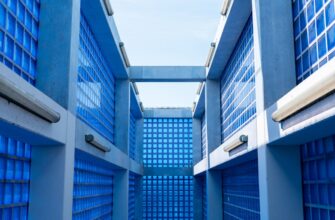In an era of escalating cyber threats and digital vulnerabilities, safeguarding your financial assets offline has never been more critical. As we approach 2025, sophisticated hacking techniques, quantum computing risks, and evolving malware demand proactive protection strategies. This comprehensive guide reveals cutting-edge offline methods to secure your funds against tomorrow’s threats—ensuring your wealth remains under your control, not a hacker’s.
## Why Offline Protection is Non-Negotiable in 2025
Cybercrime damages are projected to hit $10.5 trillion annually by 2025 (Cybersecurity Ventures). Offline storage, or “cold storage,” isolates assets from internet-connected risks like:
– Quantum computing attacks on encryption
– Supply chain compromises in software wallets
– AI-powered phishing campaigns
– Cloud storage breaches
By keeping funds offline, you create an impenetrable airgap between your wealth and digital threats.
## Top 5 Offline Fund Protection Methods for 2025
1. **Hardware Wallets 2.0**
Next-gen devices like Ledger Stax and Trezor Safe 5 feature biometric authentication, tamper-proof chips, and quantum-resistant algorithms. Always buy directly from manufacturers to avoid supply chain tampering.
2. **Cryptosteel Capsules**
Fireproof titanium plates for storing seed phrases. 2025 models include anti-EMP (electromagnetic pulse) shielding and corrosion-resistant alloys for disaster resilience.
3. **Multi-Signature Vaults**
Require 3-of-5 physical keys to access funds. Distribute keys geographically among trusted parties. Ideal for inheritance planning.
4. **Deep Cold Storage**
Combine hardware wallets with bank safety deposit boxes or home safes rated UL Class 152. Add time-delay locks to thwart burglaries.
5. **Paper Wallet 2.0**
Laser-engraved stainless steel plates with QR codes, not paper. Use open-source generators like BitAddress in offline environments.
## Step-by-Step: Building Your 2025 Offline Security System
1. **Audit Existing Assets**
Inventory all cryptocurrencies, NFTs, and digital valuables requiring protection.
2. **Implement Layered Storage**
Divide funds into tiers:
– Daily spending: Hot wallet (5%)
– Mid-term holdings: Hardware wallet (25%)
– Long-term savings: Multi-sig deep storage (70%)
3. **Create Physical Backups**
Etch seed phrases onto two cryptosteel plates. Store one offsite (e.g., attorney’s vault) and one in a UL-rated home safe.
4. **Establish Access Protocols**
Designate trusted contacts with sealed emergency kits containing encrypted USB drives with access instructions. Update quarterly.
## Future-Proofing Against 2025 Threats
– **Quantum Resistance**: Migrate to quantum-resistant coins (QRL, IOTA) or wallets using NIST-approved algorithms like CRYSTALS-Kyber.
– **Biometric Verification**: Use hardware wallets with fingerprint/FIDO2 authentication to prevent physical theft.
– **Decentralized Recovery**: Explore Shamir Backup systems that split secrets across multiple locations.
## Critical Mistakes to Avoid
– Storing digital copies of seed phrases on cloud services or phones
– Using unverified open-source wallet generators
– Ignoring firmware updates for hardware wallets
– Single-location storage of backup keys
– Sharing recovery details via email/messaging apps
## FAQ: Offline Fund Protection in 2025
**What’s the most hacker-proof method?**
Multi-signature deep cold storage. It requires physical access to multiple geographically dispersed keys, defeating remote attacks.
**Are paper wallets still safe?**
Traditional paper degrades and burns. Use laser-etched metal plates instead. Always generate wallets on air-gapped devices.
**How do I prepare for quantum attacks?**
Transition to quantum-resistant blockchains or wallets implementing lattice-based cryptography before 2025. Monitor NIST standards updates.
**Can hardware wallets be hacked?**
Physically compromised devices can be vulnerable. Choose wallets with secure elements (CC EAL6+ certification) and never expose recovery phrases digitally.
**How often should I update my strategy?**
Conduct security audits every 6 months. Rotate storage locations annually and upgrade hardware every 2-3 years as technology evolves.
## Final Thoughts
Offline protection isn’t just a precaution—it’s your financial survival toolkit for 2025. By implementing these layered cold storage strategies today, you’ll stay ahead of emerging threats while maintaining absolute control over your assets. Remember: In the digital age, true security begins where the internet ends.








